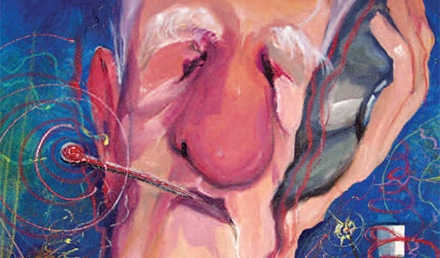OTC Topical Pain Relivers Poses Burn Risk Key point: Over-the-counter topical muscle and joint pain relivers containing capsaicin, methyl salicylate, or menthol (e.g., Bengay, Icy Hot) may cause serious chemical burns. Citation: http://www.fda.gov/Safety/MedWatch/SafetyInformation/SafetyAlertforHumanMedicalProducts/ucm319353.htm A review of two adverse drug event databases, as well as the medical literature, found 43 reports of burns linked to these products. Those containing menthol were the most likely to cause second- and third-degree burns. The FDA advises clinicians to warn …
Read MoreClinical Challenge: December, 2012
In each issue, JUCM will challenge your diagnostic acumen with a glimpse of x-rays, electrocardiograms, and photographs of dermatologic conditions that real urgent care patients have presented with. If you would like to submit a case for consideration, please email the relevant materials and presenting information to [email protected]. The patient, an 8-year-old male, presented with a cough and fever. Resolution of the case is described on the next page.
Read MoreThe Hidden Costs of the Professional Liability Crisis
As we head into a new year at JUCM, our tenth, it is a natural time to reflect on our journal’s history and our goals for the future. Just being able to celebrate a 10th anniversary is nothing short of a miracle. Medical publishing has been in transition for some time, and the number of traditional journals is decreasing. Information, even complex clinical information, is now available with the click of a button. Considering the …
Read More
An Old Condition Presents New Challenges: A Case Report of Acute Rheumatic Fever
Urgent message: Acute rheumatic fever is not common but it does still occur, underscoring the need for head-to-toe examination in patients with vague symptoms that seem unconnected. HEATHER VARLEY, PA-C, and WILLIAM GLUCKMAN, DO, MBA, FACEP Introduction Patients with fever, sore throat, and malaise often present in the urgent care setting and they typically are worked up quickly with a rapid strep test or given a diagnosis of a viral syndrome. The case described here …
Read More
Evaluation and Management of Pain (Part 1): Acute Pain
Urgent message: Urgent care providers have a clinical, legal, and moral obligation to provide appropriate treatment for patients with pain. The first article in a two-part series addresses strategies for managing acute pain. TRACEY Q. DAVIDOFF, MD The interpretation of pain by patients is very subjective and not easily measured. That makes management of pain in the urgent care setting difficult. Current pain scales are often inaccurate or not truly reflective of a patient’s real …
Read MoreClinical Challenge 2: November, 2012
The patient, an 87-year-old woman, presented with a circular and pruritic rash that had been present on her right shin for 3 days. She had no fever. View the image taken (Figure 1) and consider what your diagnosis would be. Resolution of the case is described on the next page. >
Read MoreProductivity Without Peril: Painfree Steps for Efficient Encounters
Lee A. Resnick, MD, FAAFP Managing flow in the urgent care center can be daunting. Volume and acuity are variable, staff is inconsistently engaged, and our patients can create more unpredictable challenges than a “Wipeout” obstacle course. Those who master the chaos move through the day with the effortless grace of a Kung Fu master. Those who don’t resemble something closer to a “Pinball Wizard.” So, what’s the secret sauce? Can efficiency be trained, or …
Read MoreAbstracts in Urgent Care: November, 2012
Acute Heart Failure: Hospitalize or Discharge? Key point: A new tool for estimating prognosis could facilitate rapid risk assessment. Citation: Lee DS, Stitt A, Austin PC, et al. Prediction of heart failure mortality in emergent care: A cohort study. Ann Intern Med. 2012; 156(11): 767-775. The decision to hospitalize or discharge a patient with acute heart failure (HF) is often difficult to make. To develop a prognostic model for acute HF suitable for use in …
Read MoreClinical Challenge: November, 2012
The patient, a 9-month-old male, suffered a blow to his left shoulder. View the image taken (Figure 1) and consider what your diagnosis would be. Resolution of the case is described on the next page.
Read More
Ludwig’s Angina
Urgent message: Thoroughly evaluate patients who complain of dental or oral pain. CHRISTOPHER MCKENNA and JOHN SHUFELDT, MD, JD, MBA, FACEP Ludwig’s angina is a serious and potentially life-threatening connective tissue infection found on the floor of the mouth and in the deep neck spaces. More specifically, it is a bilateral infection of the submandibular space. The two compartments affected are the sublingual space and the submylohyoid space.1 This condition usually presents in individuals who …
Read More